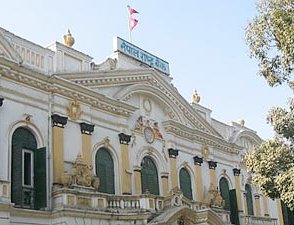
“Our thesis is that the idea of a self-adjusting market implied a stark utopia,” says Karl Polanyi (2001:3), a nineteenth century thinker. It is true that the idea of a self-adjusting market varies with time and the socio-political context in which it lies. This article understands self-regulating markets as those that promise fast-paced economic changes, where a perfect system of demand and supply helps men and society derive maximum profit. The Banking and Financial Institutions (BFIs) of Nepal appear to have created and operate within their own self-adjusting market. Their efforts to bring fast-paced economic changes are evident in the recent upsurge in the number of BFIs in the country. The increase in the number of BFIs also implies that owners believe that BFIs exist in a perfect system, where demand always equals supply and the desire to earn maximum profit will benefit society and its members.
However, it is necessary to question how self-regulating is the banking market after all. Demand has not been equal to supply – the dissolution and merger of many BFIs serve as examples of the fact. The increase in the number and types of banks has not been able to bring fast-paced changes in the economy of the country. Instead, it has weakened the capacity of the existing BFIs to fund the country’s financing needs – even if all the commercial banks unite, they can only fund one 250 megawatts of hydro power project, in a country like Nepal where lack of infrastructure is debilitating its economic progress.
Where is the ‘invisible hand’ that regulates the market? Is it dormant or actually non-existing? It is difficult to comprehend. What is evident is that the idea of self-adjusting BFI market does imply a stark utopia and that these markets require an external force to regulate it. The external force has now been realized in the recent move by Governor Chiranjivi Nepal to regulate the BFI market by requiring BFIs to increase their paid-up capital to 8 billion by mid-July 2017. Granted it is difficult to determine whether this move will truly strengthen the banking system and regulate the quasi-anarchic banking market, it has to be understood that some form of regulation needs to be applied to regulate the banking system of the country.
The new policy to be implemented by Governor Nepal does seem promising for two main reasons – it has the capacity to strengthen the BFIs of the country and to ensure the active role of BFIs in bringing long-lasting changes in the country.
It is likely that increased paid-up capital of BFIs will strengthen their capacity in multiple ways. The current capital base of BFIs of Nepal is too small compared to that of other South Asian countries. As such Nepali banks are unable to compete with banks of these countries. For example, Nepal Rastra Bank (NRB) has been approached by many Nepali banks, requesting it to ask the Reserve Bank of India to allow their branches to be opened in India. However, Indian Central Bank only allows banks with paid-up capital of IRS 5 billion (NRS 8 billion) to operate in India. Nepali banks, with low paid-up capital cannot compete with Indian banks. Also, creating a strong banking system will open Nepali banking market to foreign retail banks, and thus facilitate foreign investment in the country.
The new policy, more importantly, is likely to convert the current banking market into a system that the country can depend on to achieve its development agendas. If, instead of numerous small banking institutions, the country can have a limited number of, but strong banks, these banks can be capable of investing in big infrastructure projects. Thus, a strong banking system can simultaneously bring economic progress and establish itself as a dependable system, ensuring its own sustainability. The most appealing effect of this possibility is the dissolution of theoretical spheres of economic, political, and social activities. The government viewing the banking system as a possible support for development projects brings Polanyi’s another argument to light – economic activities has never and can never exist independently. Economic activities are closely linked to socio-political activities and economic progress to social and political progress. It is only when the goals of all these activities become intertwined, that a country can achieve its development goals.
NRB sees mergers, voluntarily or forceful, as a way for BFIs to increase their paid-up capital within a span of two years. Indeed, this has raised many concerns and questions. For instance, how successful are the mergers going to be? Which institution is likely to have the upper hand in the functioning of the merged institution? What is the effect of mergers on the rate of employment? And, how can the employees of the new institution facilitate the development of a new institutional culture? Moreover, this move of Governor Nepal has forced us to reflect on a larger question altogether – What is the role of regulations in the strengthening of economic, social, and political systems of a country?
- Poor (country) on a pile of money
- Dec 16, 2016
- Careful Financial Regrouping Cutbacks Imminent
- Nov 18, 2016
- Women Securing Water
- Oct 01, 2016
- Faithful or Fearful Fluctuations
- Aug 31, 2016
- Walking on Prachanda path?
- Aug 11, 2016

















